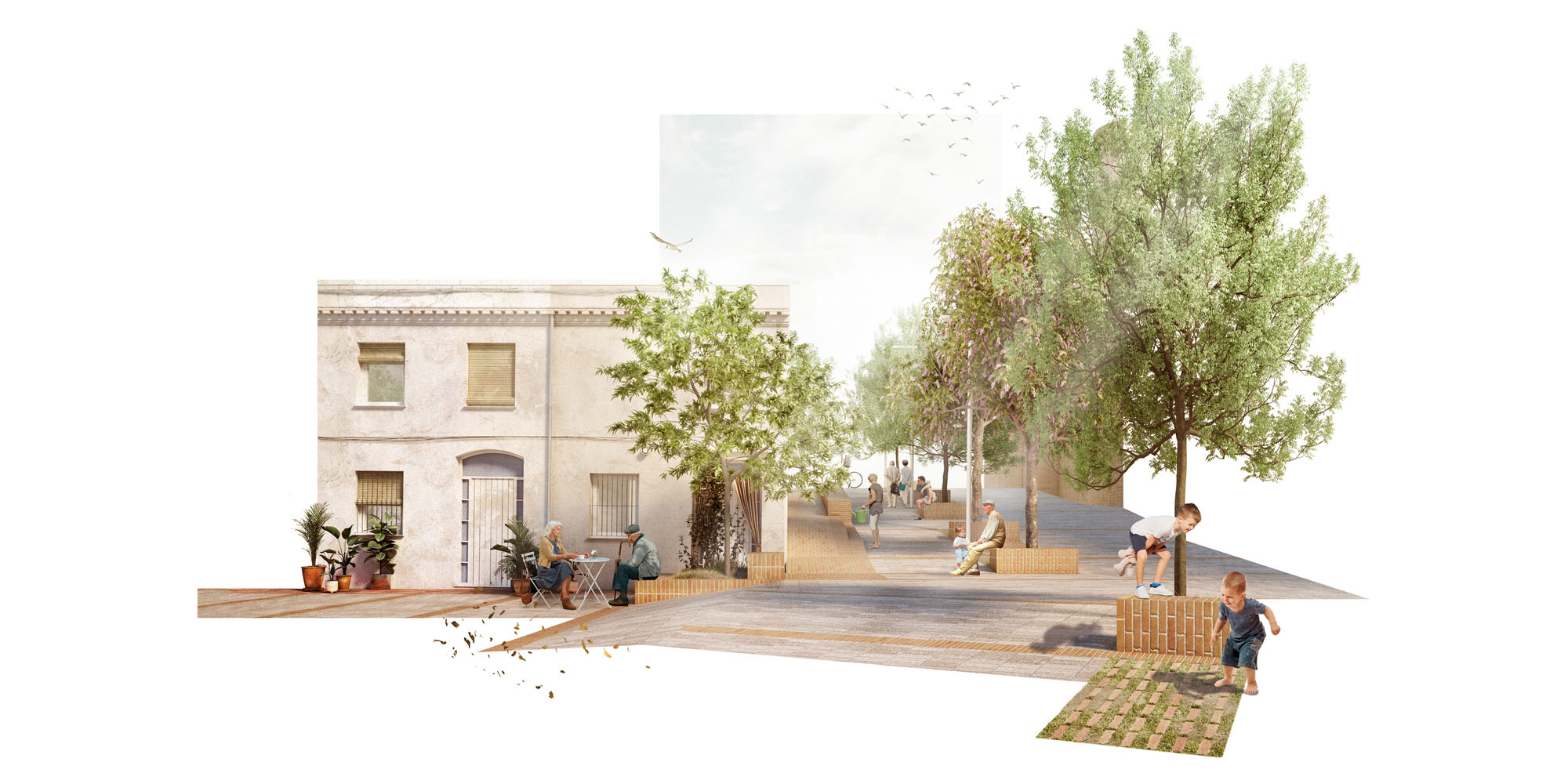
Rost Neighbourhood: ATURAR-SE
ATURAR-SE
Redevelopment of Rost Neighbourhood Competition
Alella, Barcelona 2023
with vora – arquitectura en procés
Winner
Infographics Binil
The Rost neighbourhood is quite closed and with little connectivity in relation to Alella. It is located on a slope, with a strong slope in the main axes.
There is a multiplicity of urban spaces, dominating the narrow streets. There is a lack of spaces to be in the public space, meeting areas and environmental comfort. There dominates an image of disorder given by the variability of building materials and the very visible presence of overhead wiring.
The neighbourhood is structured by the axis of the stairs (Bonavista street), a continuation of a transversal axis in Alella, connecting the landscape on both sides. This axis connects the town’s central urban facilities and spaces with the educational facilities above the neighbourhood, setting up a school route through it.
The streets perpendicular to this axis, with a horizontal slope, have a more domestic and quiet character.
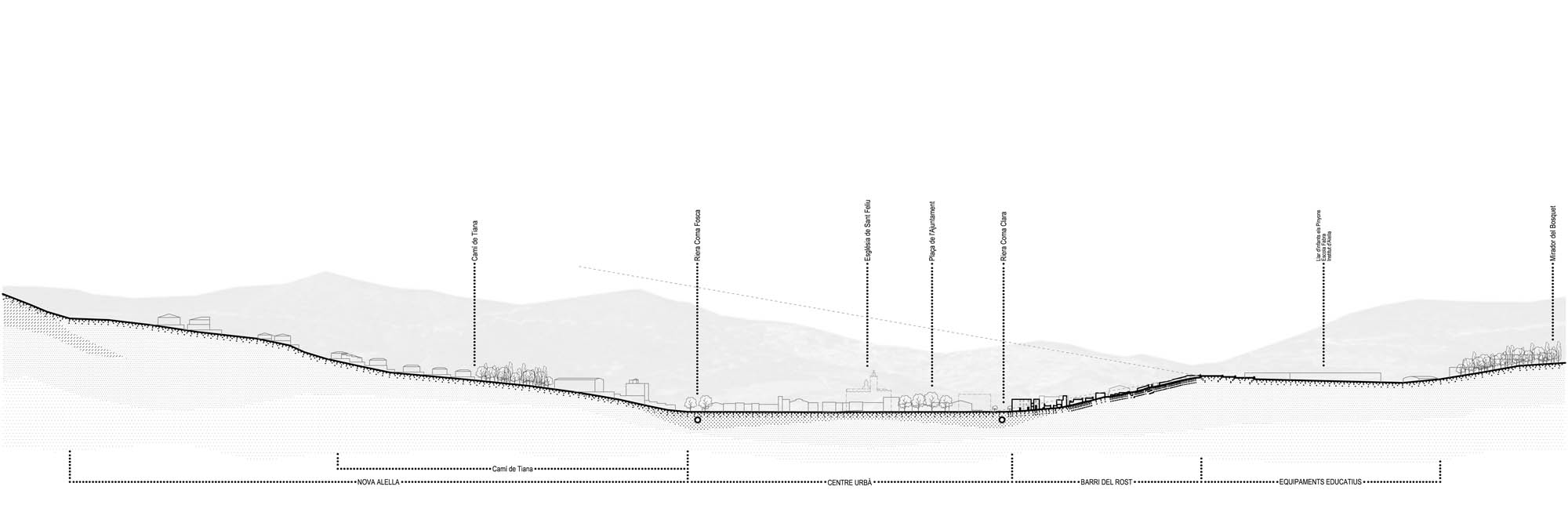
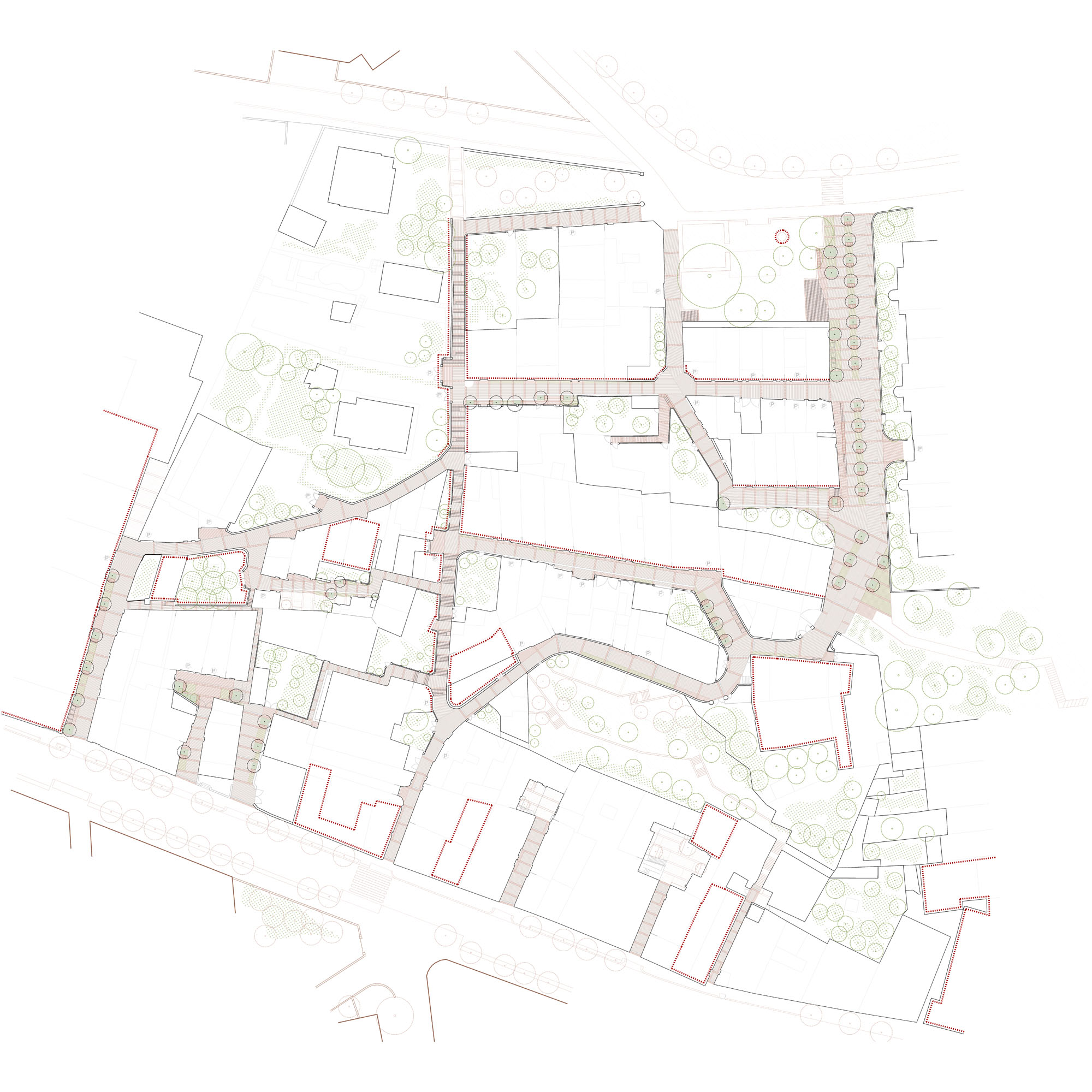
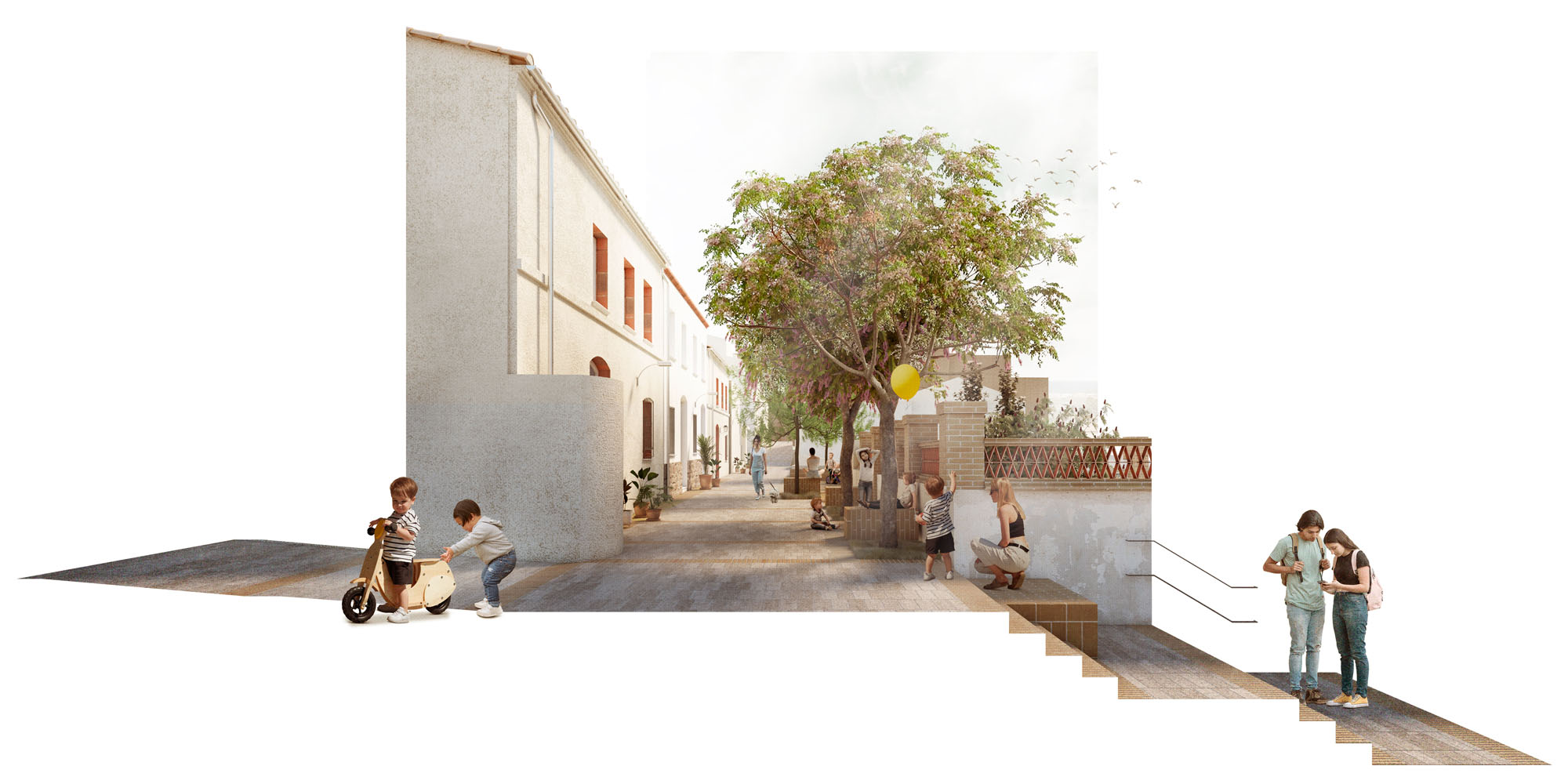
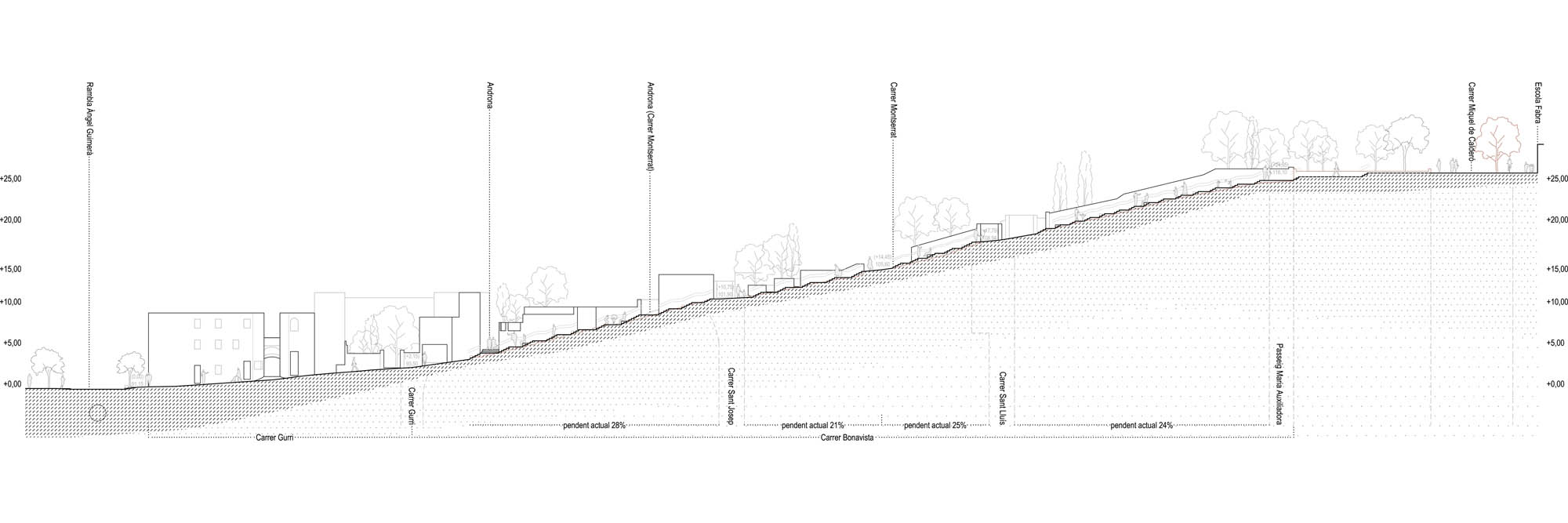
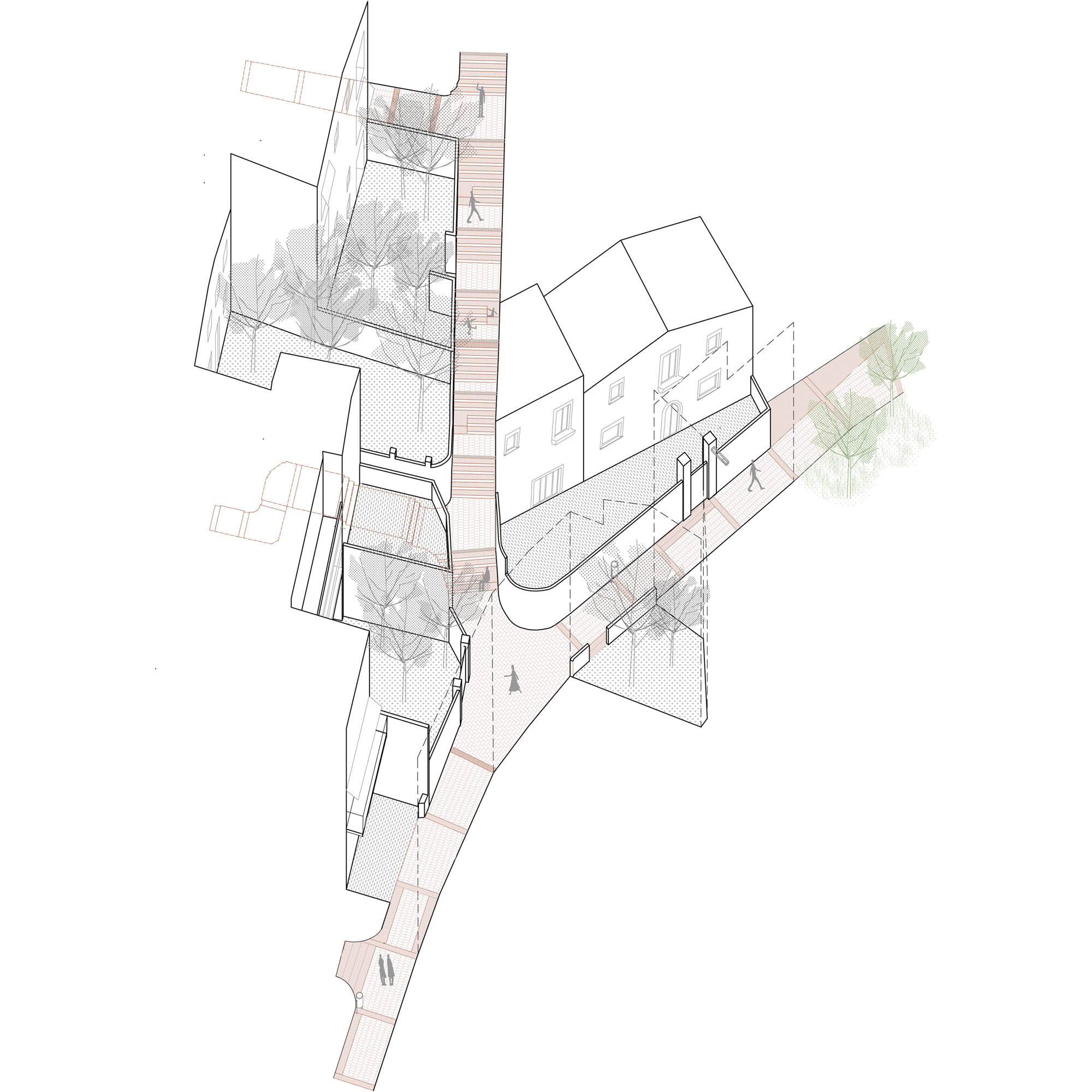
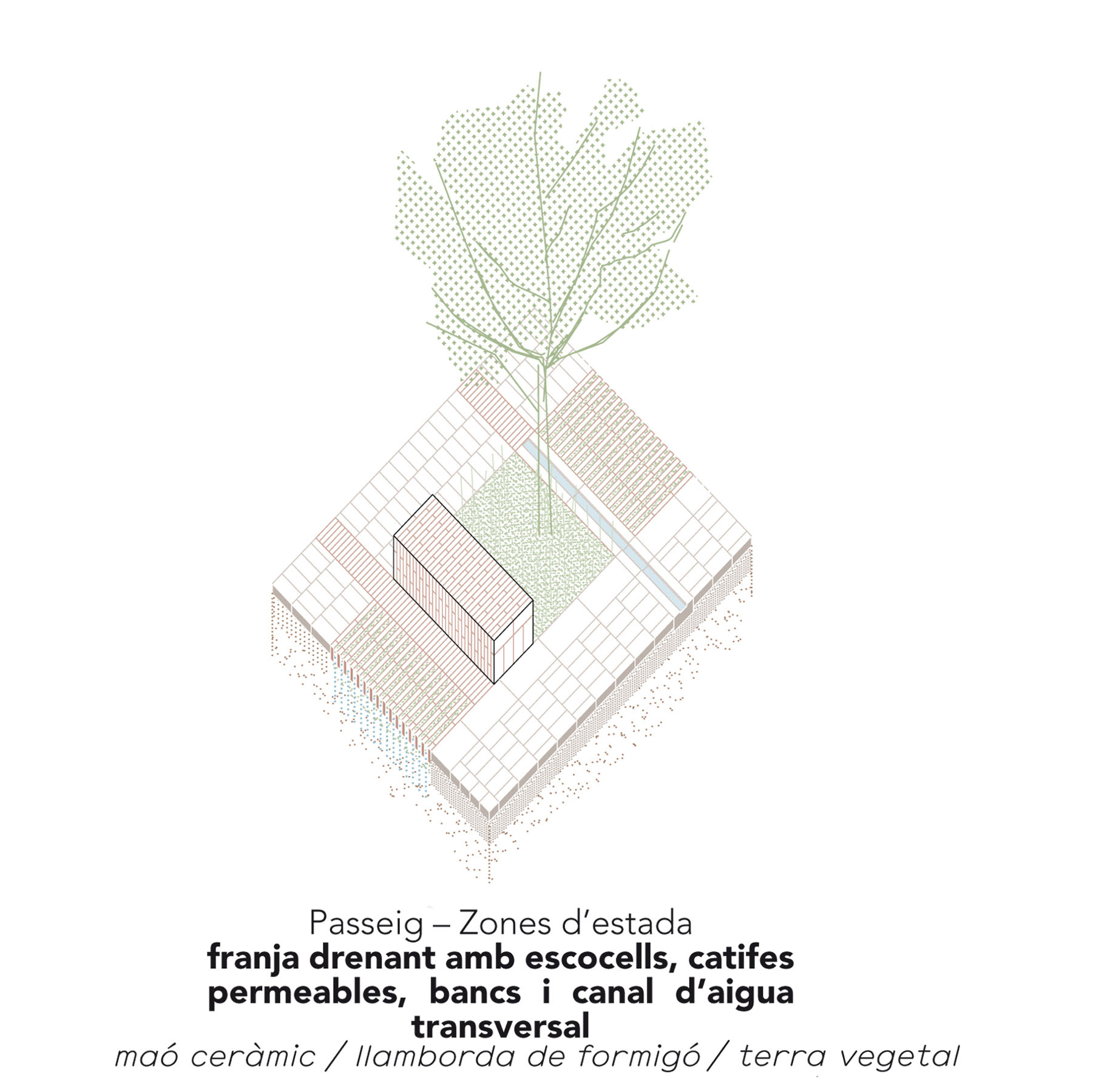
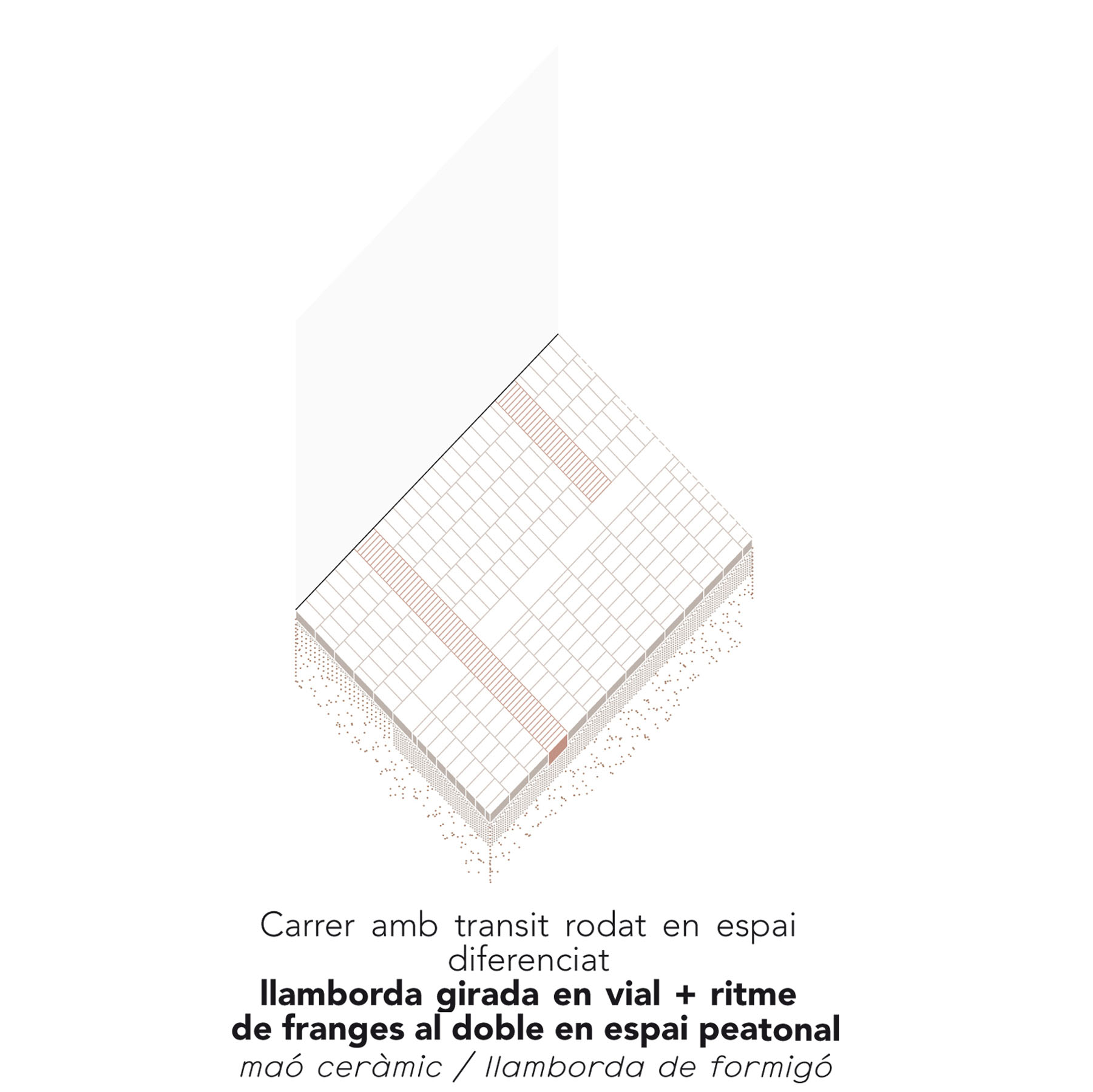
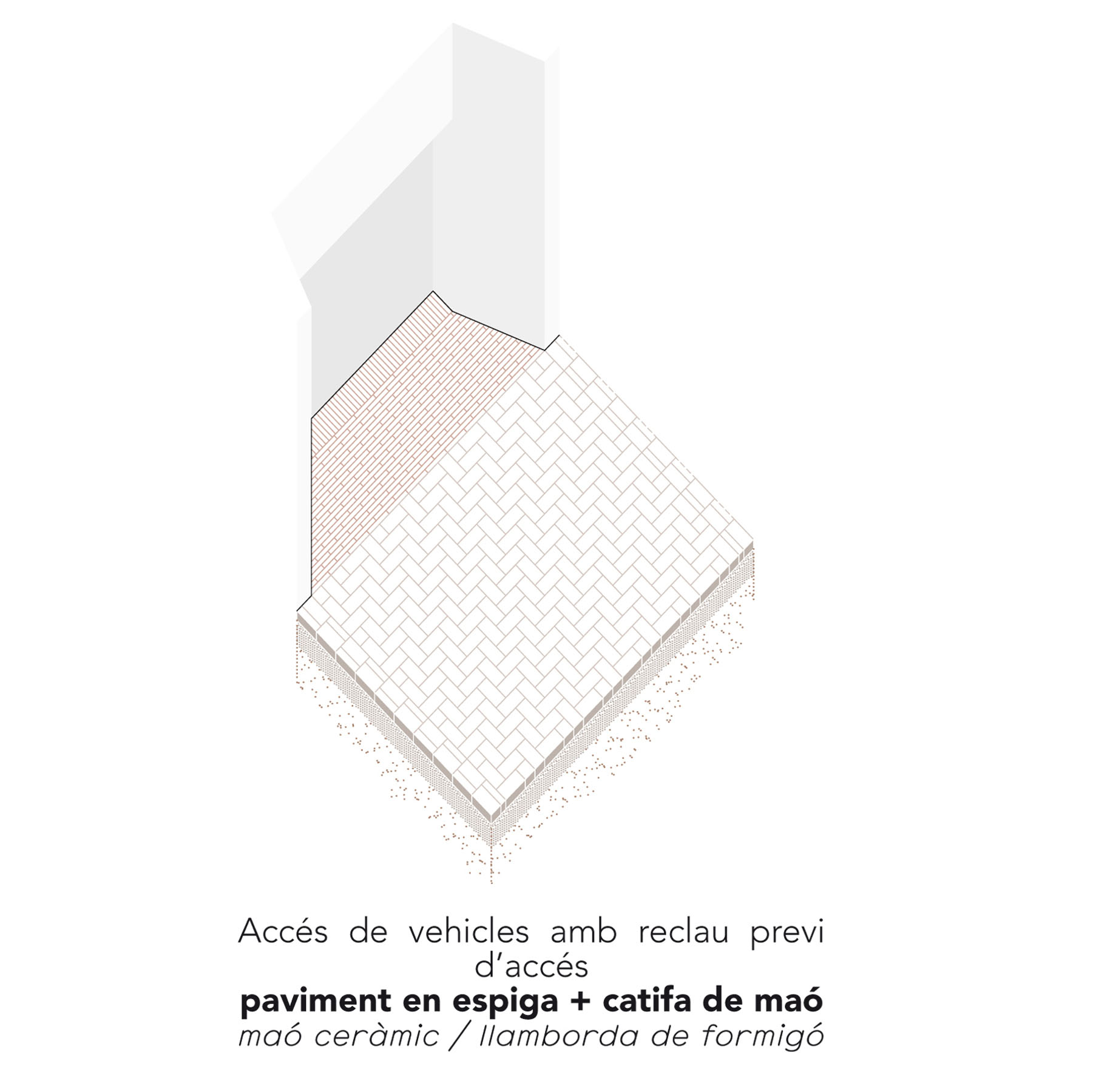
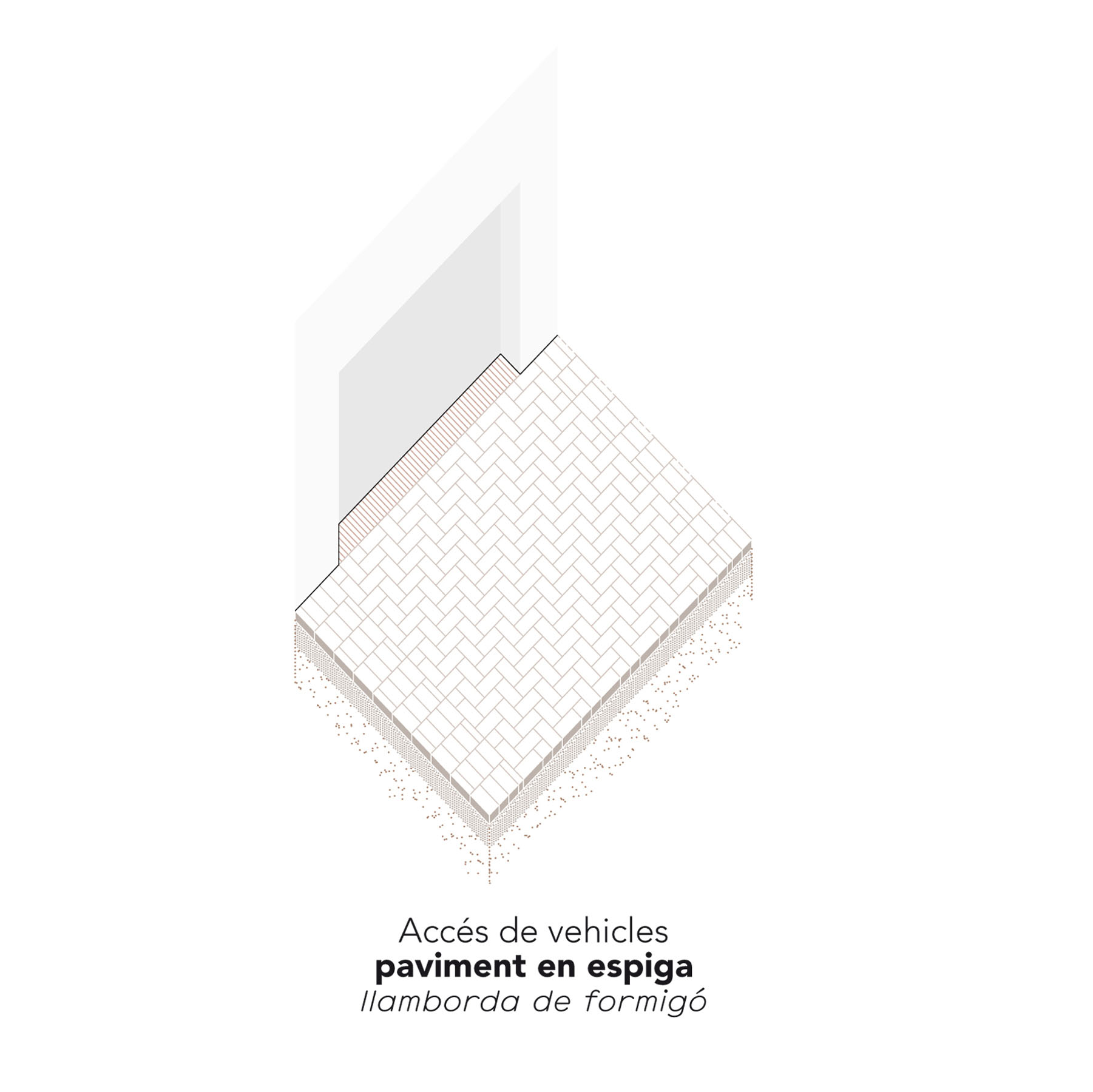
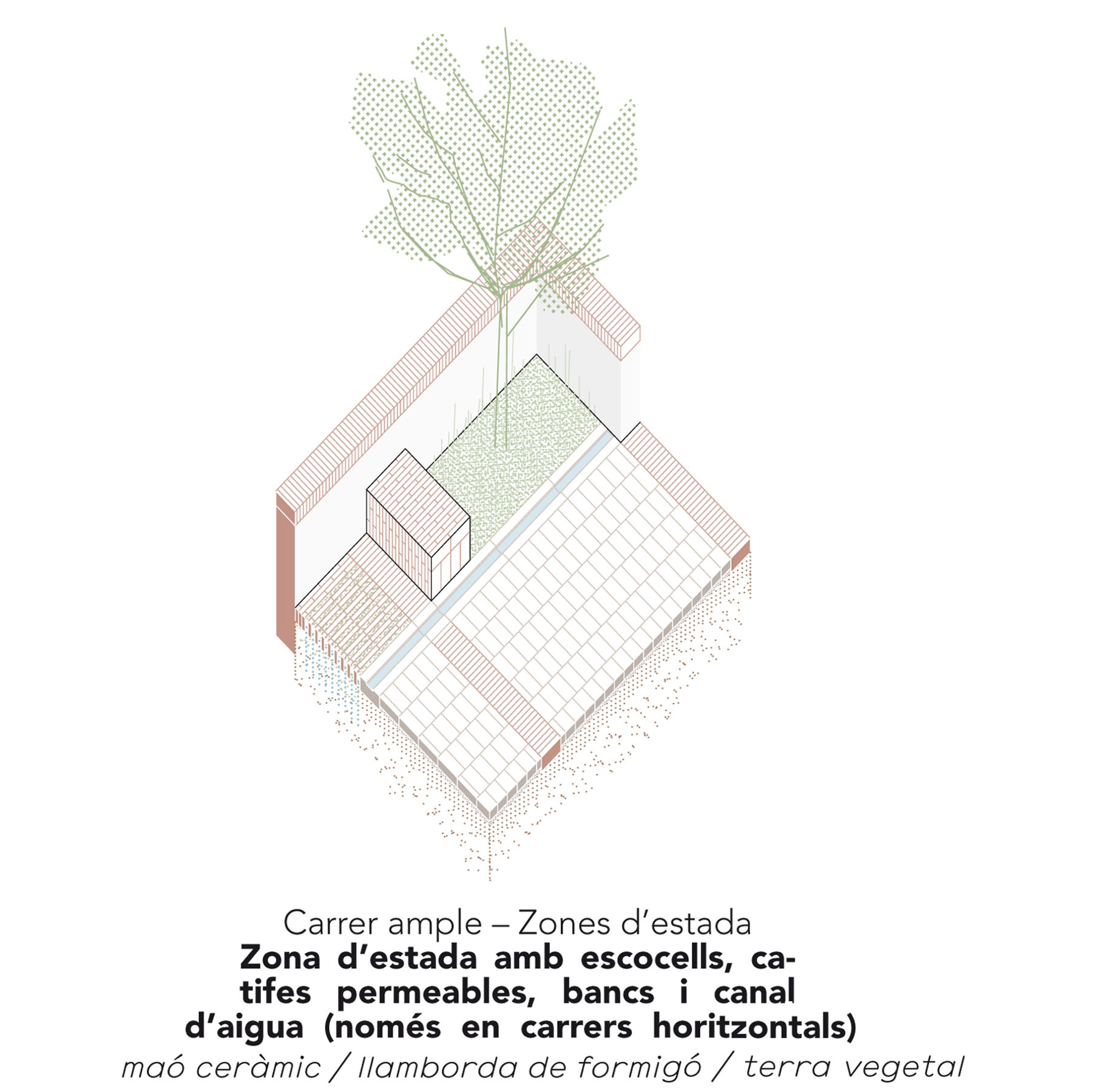
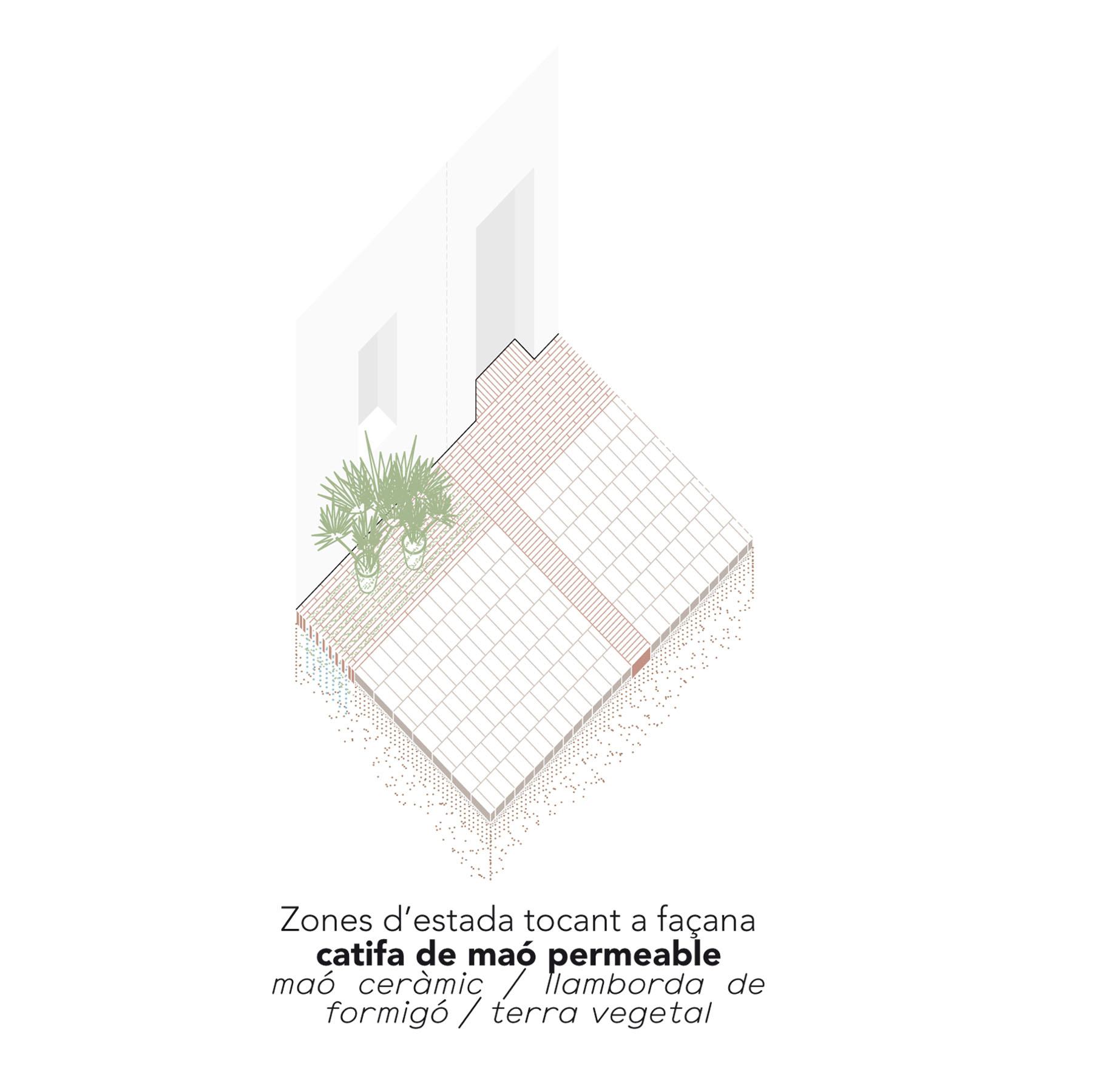
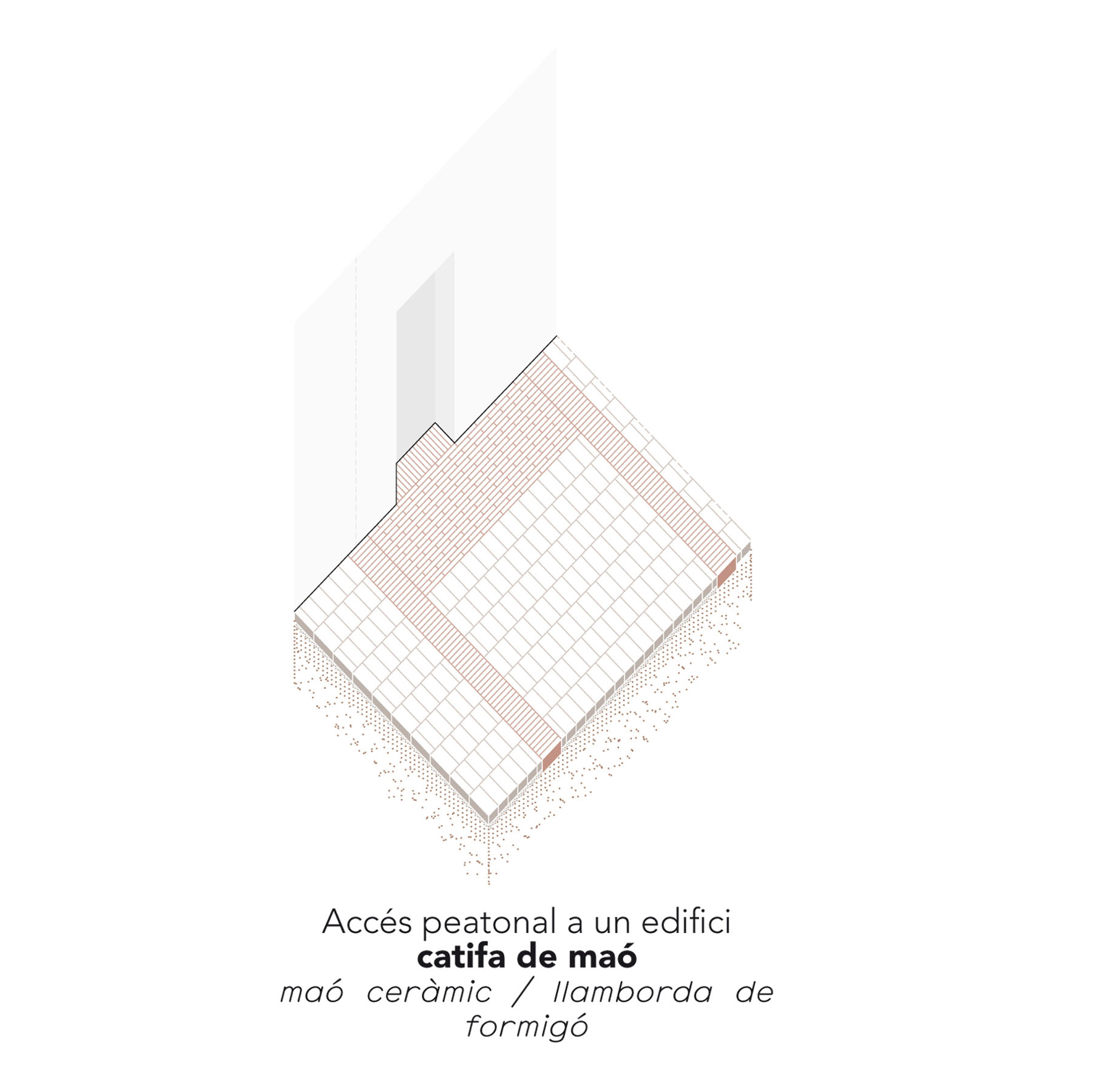
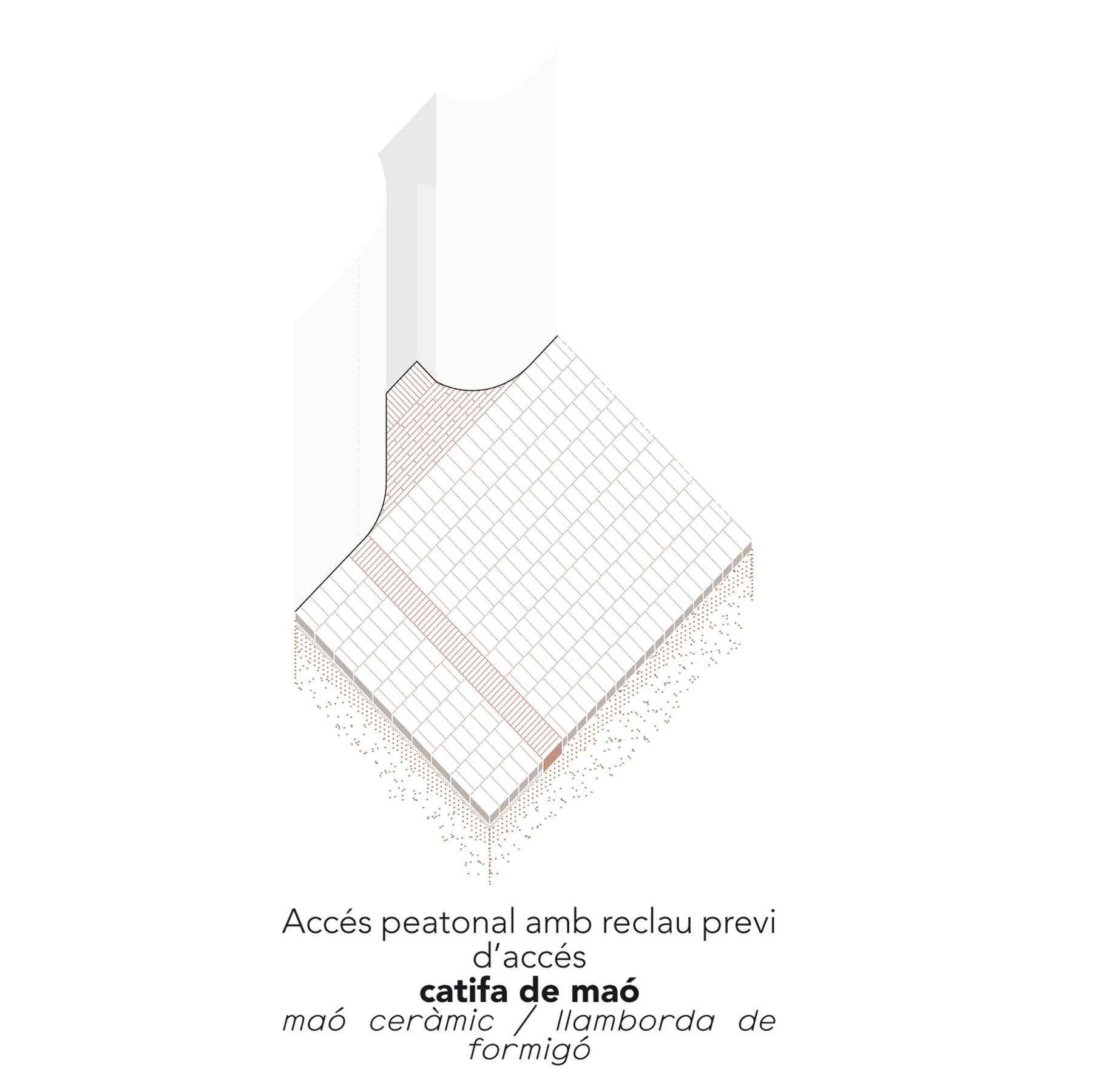
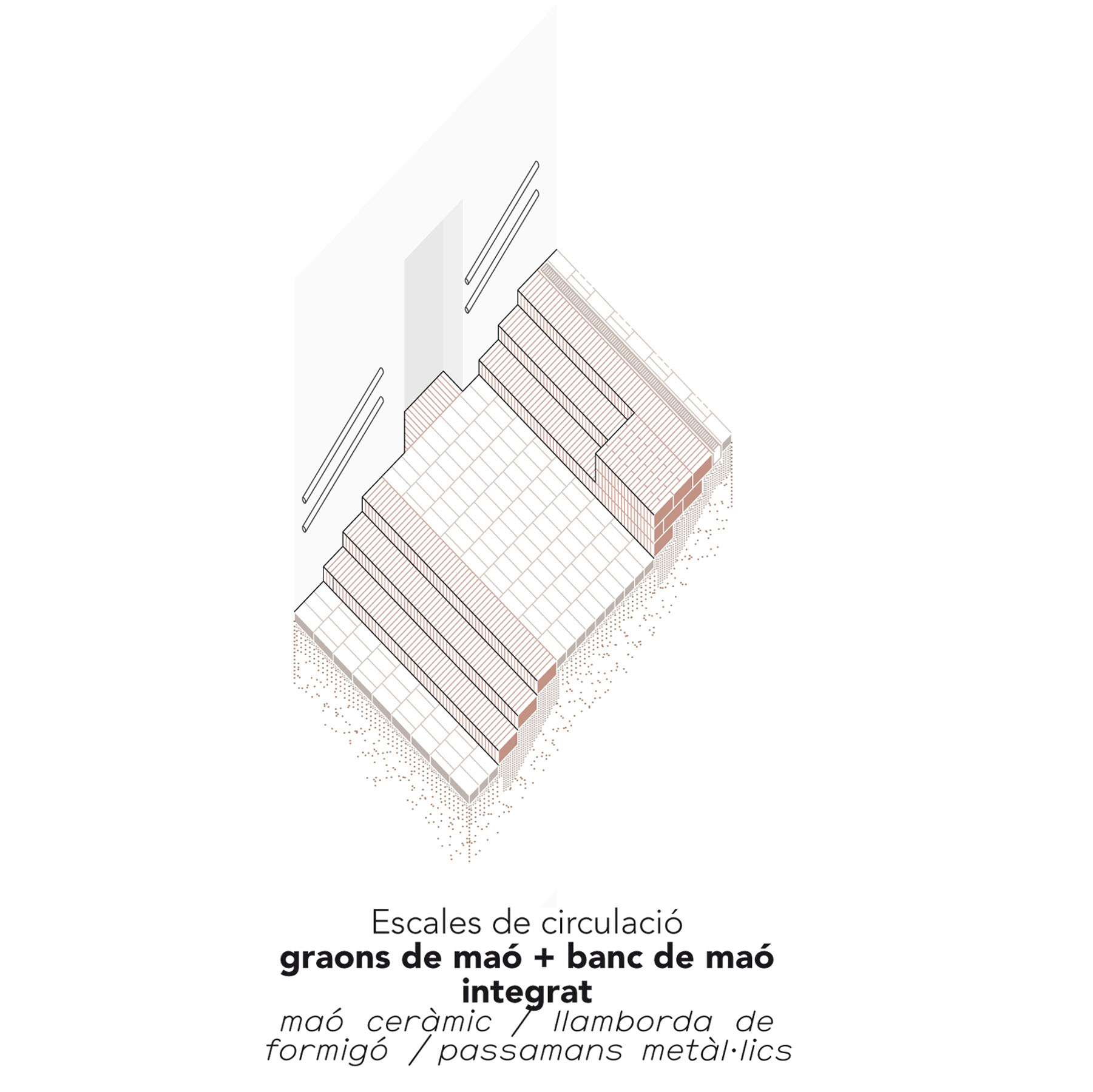
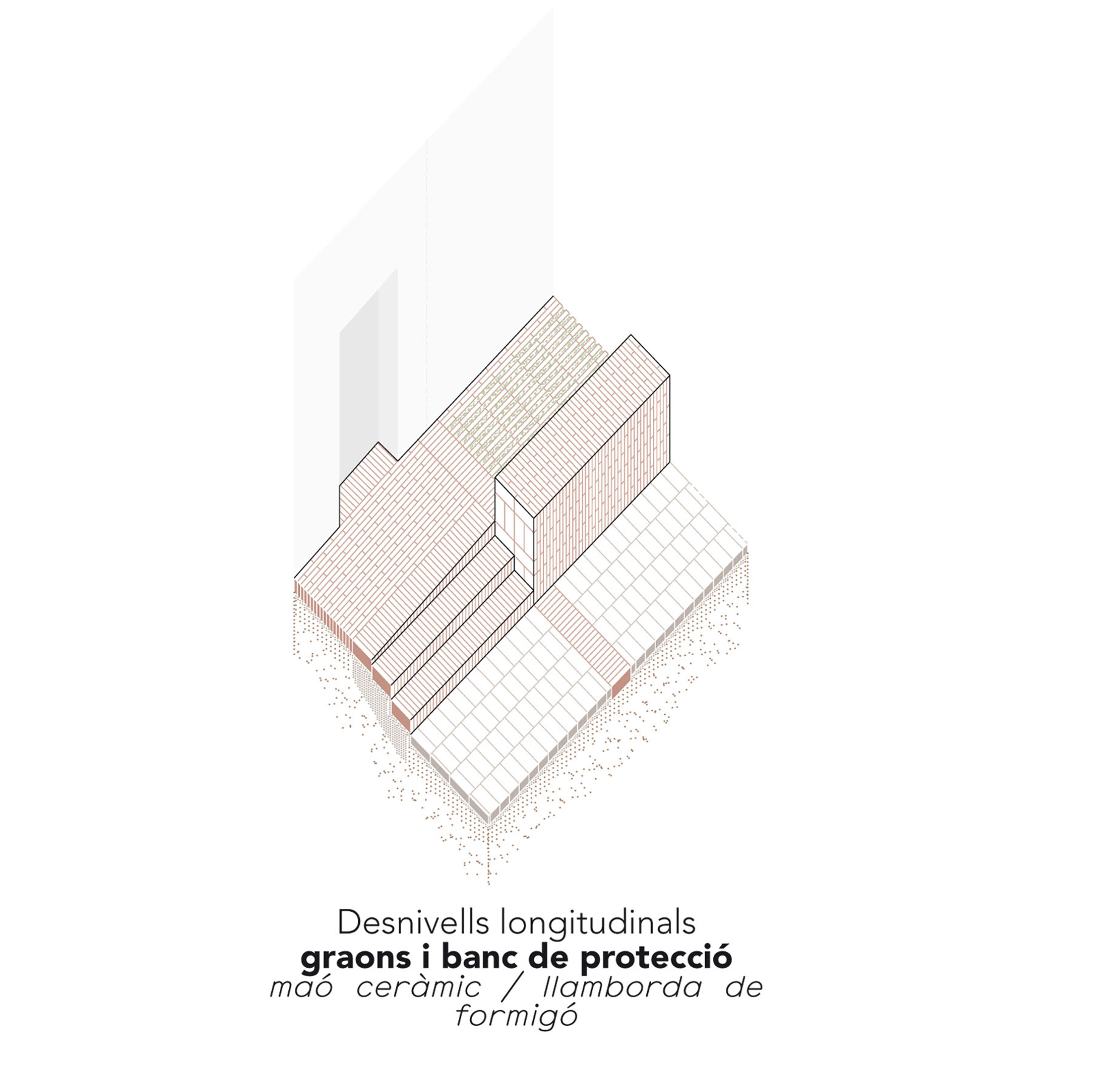
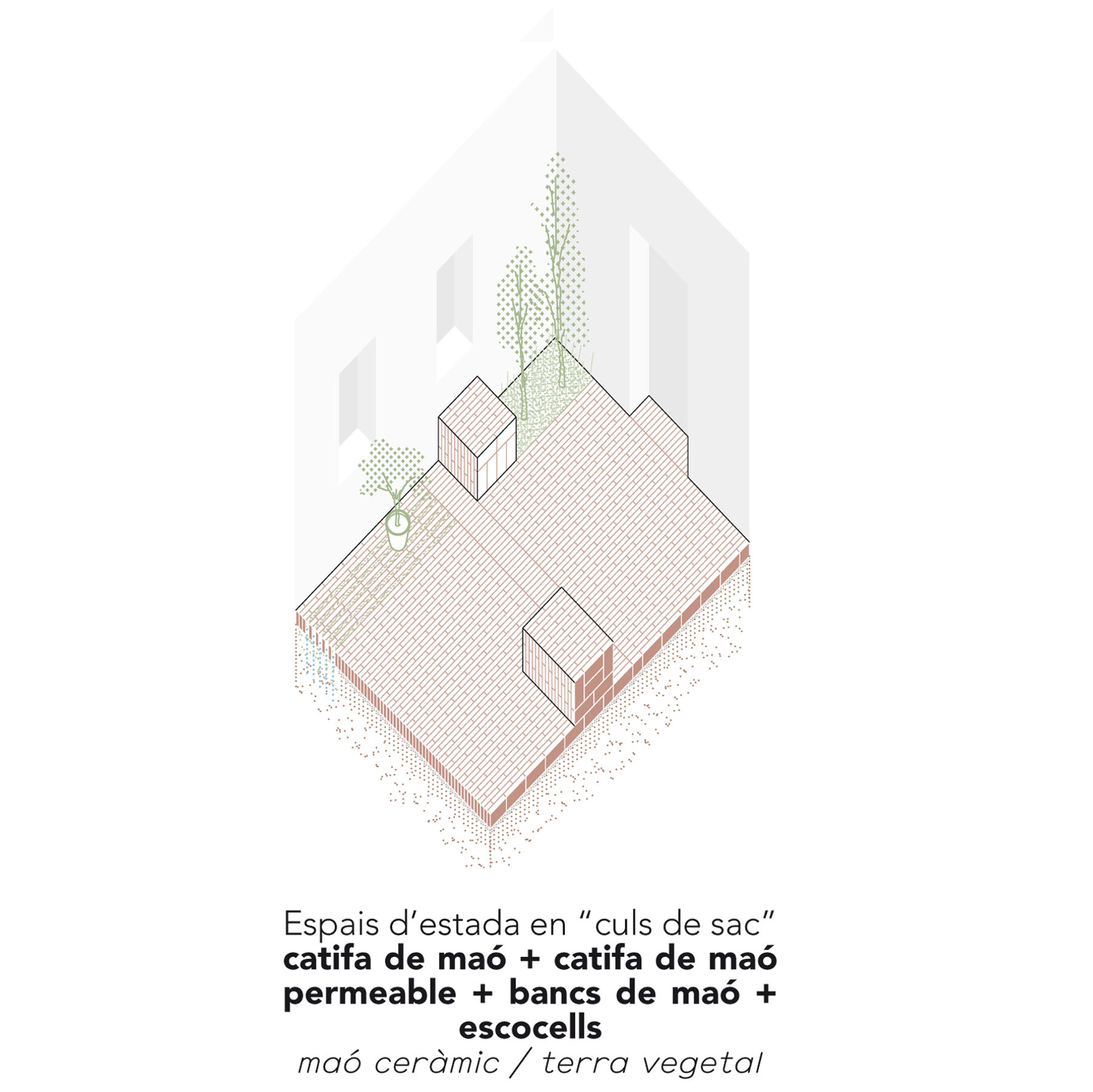
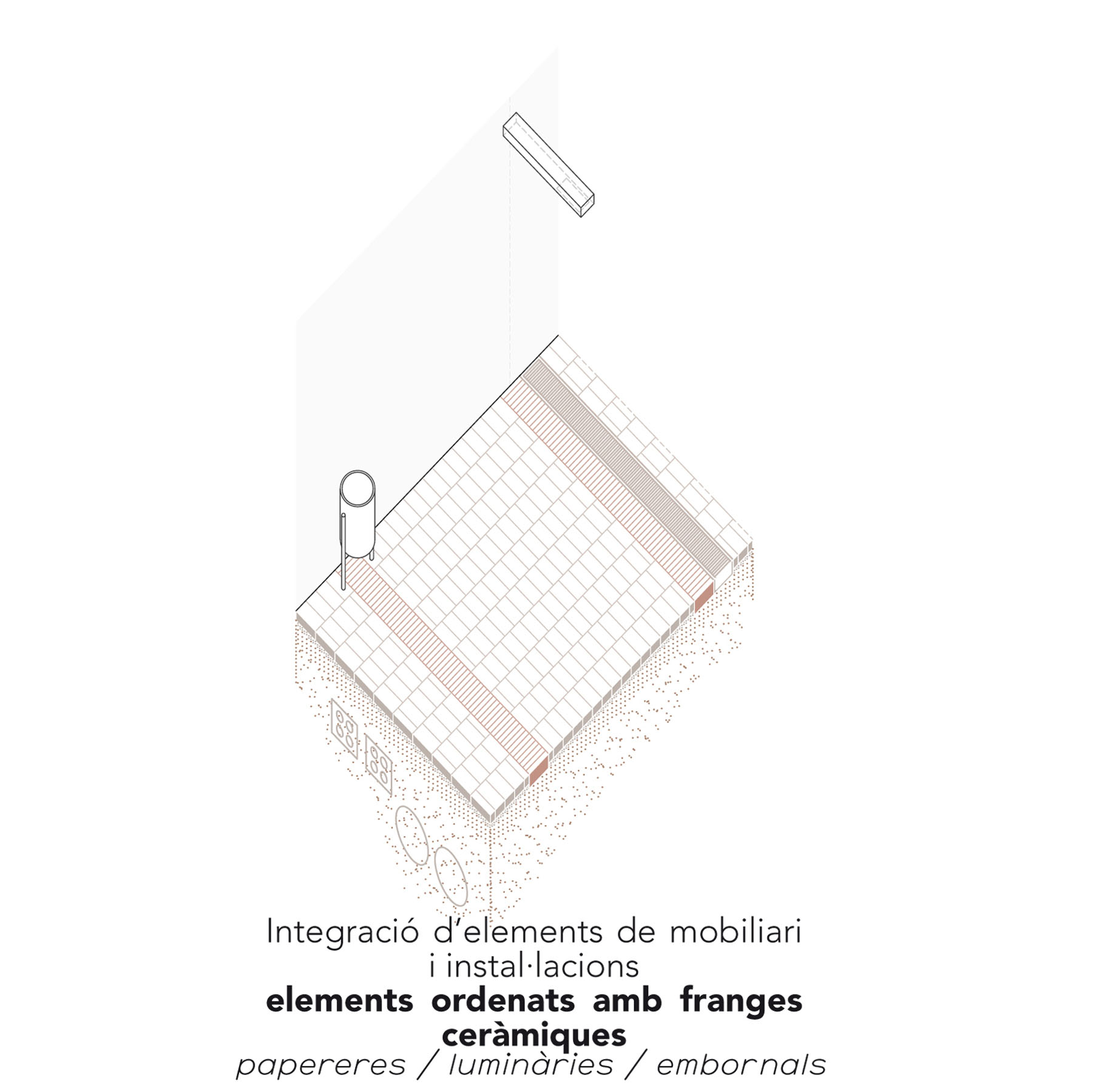
Identity.
The neighbourhood is perceived as chaotic, due to the diversity of urban spaces (streets of different widths, cul-de-sacs, stairs, hallways and passages…) and the architecture that delimits it (apart from some street frontages with heritage value as a whole).
The neighbourhood is given its own identity based on the character of the ground plan, with a material unit that unifies all the spaces with different characteristics. A material existing in various parts of the neighbourhood, the ceramic brick, is taken as a defining element of character.
The construction of the character is based on the application of a range of solutions, in the form of a catalog or alphabet, to build the story of a diverse urban space full of specific and exceptional circumstances.
Vegetation.
Permeable soil and greenery have been introduced in the streets, wherever possible (small areas of widening, and in Carrer del Rost).
The trees are of species adapted to the space, in terms of dimensions and insolation requirements. Of medium or fast growth, with low water requirements and easy maintenance. Deciduous species, with small compound leaves, provide very soft and pleasant shade.
Singularization of accesses, by way of heading: Melia azedarach ‘Umbraculifera’ (wide streets) or Fraxinus ornus ‘Mecsek’ (narrow streets or corners), singular trees with chromaticism.
Alignment trees, Gleditsia triacanthos ‘Skyline’, more neutral species.
Water cycle.
The runoff of rainwater and its collection becomes visible in the arrangement of public space.
In transversal streets, a gutter-style channel collects rainwater and leads it to ledges and areas of permeable pavements, for natural irrigation and infiltration into the ground. UDSs are built underground, avoiding diversion to sewers. Likewise, overflow outlet connected to avoid overflow.
In sloping streets and stairs, interception channels when there are trees, which lead the water to the ledges for natural irrigation. In the wake of the culverts, culverts connected to the sewer by the overflow. If there are no trees, interception gratings transverse to the axis of the street.
